by Anatoly Liberman
This is the promised continuation of the previous post. As I said last week, break is an old word. In the foggy days of Proto-Indo-European, it may have begun with the consonant bh (or simply bh), pronounced as in Modern Engl. abhor or Rob Hanson. For our purposes, the difference between b and bh matters not at all, because today we are only interested in observing how many words referring to breaking begin with br-. The subject of this essay is: “To what extent is classifying break with sound imitative (onomatopoeic) words justified?”
Moo, meow, and, admittedly, oink-oink are sound imitative. But once we leave the animal world and exclamations like phew and whew, assigning words to onomatopoeia is always problematic. Thus, each member of the set—crack, crash, crush, creak, croak, and cry—looks like any other word beginning with kr-, for example, craft, crawl, and creep, but in their entirety they produce the impression of belonging together and suggest a rather obvious sound effect. The same holds for initial gr-: compare groan, growl, grumble, grunt, and possibly grind. Numerous words signifying grouchy people, as well as grim and gruesome things, also begin with gr-. Labeling them sound imitative will not take us too far, since they have well-developed bodies and not only heads.
Modern scholars have no idea how language originated (or rather they have many ideas that cancel one another out; the usual cliché is “shrouded in mystery”), but in the existing languages words are conventional signs, that is, when we look at a word, we usually do not know its referent in the world of things. If we possessed such knowledge, explanatory and bilingual dictionaries would not be necessary: anybody would be able to look at a “sign” like bed or ten, or give and guess what it means. Moo is fine (presumably, no dictionary is required for translating it), but oink-oink is obscure: perhaps it is a soothing exclamation like tut-tut, a verb like pooh-pooh, a noun like tomtom (a drum), or the name of a disease like beriberi. I am not sure that pigs go oink-oink, and anybody can notice that the canine language is represented by several dialects: compare bow-wow, barf-barf, and yap-yap. And yet, crash, crush, crack, and so forth rather obviously have something to do with onomatopoeia. People seem to have begun with the sound imitative complex kr and added a syllable, to make the words pronounceable. This may be a bit of a stretch, but the etymological principle behind my statement is (if a pun will be allowed) sound.
Old English had the verb breotan, which also meant “break.” It has been lost, except for its cognate brittle “liable to break, fragile.” Breotan lacks attested cognates, and its origin is unknown. But the fact remains that, like break, which had many cognates, it also begins with br-. Though today burst contains a well-formed group bur-, its most ancient form was brestan (in such groups vowels and consonants often play leapfrog—this process is called metathesis: compare Engl. burn and German brennen; the German verb has preserved a more ancient stage: the original form was brannjan; the Old English for run was rinnan alternating with iernan
Whether true or not, it's been reported that Alfred, Lord Tennyson once said that others may have written better poetry than he, but none had written poems that sounded better. He may be on to something there, because he was certainly (as I have commented before) a master of assonance (repetition of vowel sounds), alliteration (repetition of consonants) and, well, repetition, as well as onomatopoeia (use of a word that imitates the sound it describes). And he crafted poems that were designed for performance, or at the very least, to be read aloud. All those devices he uses make his lines easier to memorize, and enable a speaker to sound like a true orator.
Today's poem is actually a small section of a long work entitled The Princess. The premise of The Princess is that a group of seven college students, on holiday, get involved in a discussion with a few females about issues such as women's rights - and, more specifically, the education of women - as well as the need for education of the poor. Tennyson (quintessential Victorian that he was) felt the need to make clear that women should not be treated the same as men, nor should they aspire to the same careers or positions as men, and his poem was criticized as anti-feminist. That said, The Princess does champion the notion of teaching women history, science (as then understood, which included phrenology, which is, if memory serves, how to understand human nature by reading the bumps on one's skull), socialism (then a word for learning how to understand society and the roles within it), math, geography and languages. And if one reads some of it, one gets the idea that Tennyson realized that women were largely treated like cattle - and may not have approved. But truly, I digress.
Today's excerpt from The Princess is usually referred to by its first line. You should know that its my opinion that this is an erotic, sexual poem, a position which I'll set forth in full. But first the poem, and then the conversation.
Now Sleeps the Crimson Petal, Now the White
by Alfred, Lord Tennyson
Now sleeps the crimson petal, now the white;
Nor waves the cypress in the palace walk;
Nor winks the gold fin in the porphyry* font:
The fire-fly wakens: waken thou with me.
Now droops the milkwhite peacock like a ghost,
And like a ghost she glimmers on to me.
Now lies the Earth all Danaë** to the stars,
And all thy heart lies open unto me.
Now slides the silent meteor on, and leaves
A shining furrow, as thy thoughts in me.
Now folds the lily all her sweetness up,
And slips into the bosom of the lake:
So fold thyself, my dearest, thou, and slip
Into my bosom and be lost in me.
*porphyry: a purple-red stone containing crystals throughout, coming from a quarry in the eastern desert of Egypt that was rediscovered in 1823 (during Tennyson's lifetime).
**Danaë: a character in Greek mythology, who, after being locked up in a subterranean chamber made of bronze by her father, was euphemistically "visited" by Zeus in a shower of gold rain (no - I do not want to call it a "golden shower"), thereby conceiving Perseus. Those of you interested in astronomy are likely aware that the Perseid meteor showers derive their name from Perseus, because they appeared to come from the constellation of Perseus.
Let's look first at form
A first reading of this poem gives you the impression that it is written in rhyme, but that is not actually correct. In fact, the end rhyme that you see is actually just the word "me", repeated. The poem is written in blank verse (unrhymed iambic pentameter), but the frequent use of the end-word "me" makes it seem like it rhymes, as does the near-rhyme in the final four-line stanza of the words "up" and "slip".
The poem is broken into five stanzas: the first and fifth contain four lines, and the middle three contain two lines each.
Analysis of the poem's structure and meaning
Why the five stanzas? Well, the first and fifth stanzas are bookends, I think. The first sets the scene (it's evening! in a garden!), but it also makes clear that this poem is addressed to someone (whether male or female is unclear, but the notion that it is a lover, or a person that the speaker would like to have as a lover, comes clear as we go along).
The second stanza talks about two things: seeing a white peacock in the night garden, and how the woman he sees glimmers in the moonlight/starlight like a ghost. It's an interesting construction, because he is talking to a person, but in this stanza, it sounds as if he's talking about her instead.
The third makes another comparison, and this is where things get really, really interesting. In the first line, he says "Now lies the Earth all Danaë to the stars". Taking into account the story of Danaë that I summarized above, he means that the Earth is open to being (for want of a better term) fertilized by the stars in the night sky. He quickly follows that with "And all thy heart lies open unto me." Romantic, definitely. Erotic, too, if you ask me.
The fourth makes both the romantic and the sexual intent clear in my books (not that I've seen a lot of discussion of this poem as having anything to do with sex, but that's only because historically, folks liked to give Victorians credit for not talking about sex. As we know, however, that's not really the case, and many "repressed Victorians" were horndogs, or at least keen enough observers of human nature to know what was what.) That fourth stanza again? "Now slides the silent meteor on, and leaves /A shining furrow, as thy thoughts in me." The sliding meteor and shining furrow, in conjunction with the earlier reference to Danaë is not, I would argue, accidental, but is again a sexual reference. That said, it's also a reference to the Perseid meteor showers, which rain down on the earth from "the stars", with tails that could appear to leave (for the moment) a furrow in the sky. Going back to the reference to Danaë, however, those meteors come streaking toward earth like golden rain, fertilizing their target. In this stanza, it's the poets thoughts that have been fertilized. (Again, this works on two levels - he's thinking about the unknown female subject of the poem, but he's also thinking fertile thoughts, if you catch my drift.) Also? Traditionally the word "furrow" goes with "plowing" and "plowing" is a euphemism for intercourse. So.
The fifth stanza is the closing bookend - four lines for additional weight, to balance the four that started the poem and set the scene. Here's the payoff, as it were (pun intended). In the first two lines, he talks of how the water lily folds "all her sweetness up/And slips into the bosom of the lake". First off, water lilies don't really submerge, to my knowledge, and given the keen interest in botany that prevailed during Victorian times, Tennyson probably knew that, which means that he was taking license for a reason. That reason? To show a complete yielding of the female, who is not merely submerged, but completely possessed by the the lake. The final two lines are spoken directly to the person who was addressed at the close of the first stanza:
So fold thyself, my dearest, thou, and slip
Into my bosom and be lost in me.
Wow. So lovely. And still, erotic. And quite possibly a reference to the notion of two becoming one, although with the phrase "be lost in me", it seems to intimate a sense of sexual abandon, I think.
I love this poem for its surface beauty, for its gorgeous word choices, and for the way it sounds when you read it aloud. And I love it even more for its erotically charged imagery and secret meaning. How 'bout you?

Last Thursday I hauled my exhausted carcass from my bed at the ungodly hour of 7:15 (on days that I work 12-8 I usually get to sleep in a little) and high-tailed it over to the Random House building on Broadway for their Librarian and Reviewer Presentation: Fall 2007. You know, every publisher's preview has something to recommend it. Little Brown may wipe the floor with everyone else foodwise (and they do) but Random House wins for frequency. Every single season they pull out all the stops for a fabulous production. It's like watching a show. You plunk your tookus down in a seat and stare as imprint after imprint parades onto the stage to present a Powerpoint of upcoming books and titles. I've come to terms with knowing that of the books I think look fabulous I will probably never see them until they come out in stores. Lackaday.
First up was a bit of a surprise. A new imprint called Robin Corey Books presented by a Robin Corey (coincidence, no?). She's starting off nice with a new Sandra Boynton called What's Wrong, Little Pookie? Otherwise she hasn't quite found her core author/illustrators yet. The bulk of good books coming out this year, hands down, goes to good old Schwartz & Wade.  Sometimes I'm not entirely taken with the seasonal selection of S&W, but this particular list seemed especially choice. First of all, the author of the book Riding in Cars with Boys has a picture book. I'll rephrase that. The author of Riding in Cars with Boys has a picture book and it looks fabulous. For Mary and the Mouse, The Mouse and Mary the illustrator is Barbara McClintock, which was quite a "get" right there. The book parallels the lives of two girls, one human and one a mouse, as they live near one another without knowledge of one another. Their daughters, however, meet near the end and a friendship blooms as a result. Ms. Schwartz (Ms. Wade was elsewhere) compared it to The Borrowers and there's some legitimacy there. Not the least of which is the fact that Ms. McClintock's style is not too different from that of Borrowers illustrators, Beth and Joe Krush. The book also apparently proves that there is a picture book trend this year concerning mice who go to college.
Sometimes I'm not entirely taken with the seasonal selection of S&W, but this particular list seemed especially choice. First of all, the author of the book Riding in Cars with Boys has a picture book. I'll rephrase that. The author of Riding in Cars with Boys has a picture book and it looks fabulous. For Mary and the Mouse, The Mouse and Mary the illustrator is Barbara McClintock, which was quite a "get" right there. The book parallels the lives of two girls, one human and one a mouse, as they live near one another without knowledge of one another. Their daughters, however, meet near the end and a friendship blooms as a result. Ms. Schwartz (Ms. Wade was elsewhere) compared it to The Borrowers and there's some legitimacy there. Not the least of which is the fact that Ms. McClintock's style is not too different from that of Borrowers illustrators, Beth and Joe Krush. The book also apparently proves that there is a picture book trend this year concerning mice who go to college.
 S&W also got their hands on a new Ana Juan. The author's unknown to me (Monique De Varennes, anyone?) but the feel and illustrations of The Jewel Box Ballerinas is typically gorgeous stuff.
S&W also got their hands on a new Ana Juan. The author's unknown to me (Monique De Varennes, anyone?) but the feel and illustrations of The Jewel Box Ballerinas is typically gorgeous stuff.
There was also a book called Waking Up Wendell by April Stevens that is illustrated by everyone's favorite Tad Hills of Duck and Goose fame. Two points recommend themselves with this book. 1) The endpapers have a dreamy distance to them typical of his other work. 2) There's a scene where (I think) the cat is slamming itself against the family's bedroom door in an effort to get in. You see everyone in bed and as they look around in confusion while the words, "WACK-SLAM! WACK-SLAM! WACK-SLAM!" are punctuated overhead. My old cat used to do this. And I can attest that the sound was exactly the same.
Wendy Lamb then came up to talk about her own imprint's books. The term, "Volcanoes, vampires, and love," summed up her titles this season. First book, Night of the Howling Dogs, almost wins my award for Best Powerpoint Byline: "From a Scott O'Dell Award winning author, it's just another camping trip - until the tsunami." Oh, Graham. Somehow Mr. Salisbury could make you seriously believe that Hawaii was the most dangerous place on earth. If the Japanese aren't bombing you one moment, you're suffering earthquakes AND tsunamis the next.
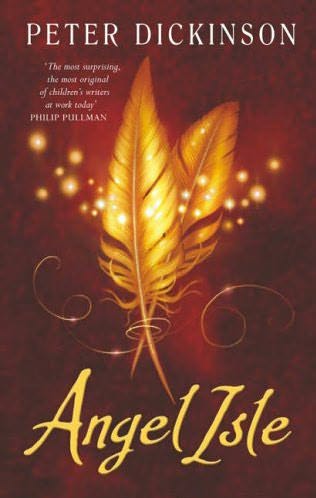 Good news on the fantasy front. Peter Dickinson (Eva) at the grand old age of eighty has written a sequel to The Ropemaker. It's a 512 page sequel entitled Angel Isle (British cover featured here) and takes place 200 years after the first book.
Good news on the fantasy front. Peter Dickinson (Eva) at the grand old age of eighty has written a sequel to The Ropemaker. It's a 512 page sequel entitled Angel Isle (British cover featured here) and takes place 200 years after the first book.
Moving on, I came to the conclusion that Random House gets 30-some new editors every season. Why else would I not recognize these people? Well the Random House Golden Books division was mighty pleased to present a new Leonard Marcus title, I can tell you. It was described as the third in Leonard's series on the history of picture books. The first was Margaret Wise Brown: Awakened by the Moon. The second Dear Genius: The Collected Letters of Ursula Nordstrom. And now he's created Golden Legacy which looks at, "How Golden Books won children's hearts, changed publishing forever, and became an American icon along the way." Veeery informative stuff. Mr. Marcus himself came to the podium and explained how the idea behind Golden Books in the midst of the Depression was to create affordable children's books for all. Many of the artists who worked on the books had fled Europe during the war. . . . or they fled Disney studios. Ho ho. Leonard went on to call the clever marketing of the books in drugstores as "democratizing". Businesses today should latch onto that lingo themselves. Some mention was made of the library community "vilifying" the books, though I can attest that NYPL is purchasing collected editions of the titles these days. Sidenote That I Didn't Know: Simon and Schuster were young Jews in the 30s who couldn't get jobs so they started their own company.
I got a bit distracted after this by, of all things, Happy Healthy Monsters: Grover's Guide to Good Eating. On the cover is Grover in his standard waiter gear with the now ubiquitous Elmo at his side. It got me to thinking. The cover just proves that even when a book references a classic Grover sketch, he just can't hold his own without Elmo anymore. What if they were writing The Monster at the End of This Book today? Would someone force the author to smuggle in some horrid red monster at some point? Oog.
We looked at some of the standard series titles, including a new Magic Tree House Research Guide called Polar Bears & the Arctic. After mentioning that polar bears eat more humans than any other animal, one of the editors said offhand, "The perfect book for your collection if you want to see an 8-year-old cry". Good sense of humor, those editors.
A big deal was made about a new fantasy series in town, and at first I wasn't interested. Read the byline: "When Max has a cryptic vision he learns that destiny has great plans for him." *yawn* Oh, and the name is The Hound of Rowan (The Tapestry Trilogy #1). *double yawn* Then they started to describe it and it got kind of interesting. Author Henry H. Neff quit his high-powered job to become a high school teacher (!?) and wrote this book on top of all that. He also illustrated it and his illustrations actually look cool. But then I got thrown back to my yawns when I heard that it was set in a school like Harry Potter and worked in Celtic mythology. BUT, and here's the kicker, this is a book where the hero is not "The Chosen One". That would be his roommate. Our hero is, in fact, a kind of bodyguard instead. And that is why I may actually wish to read this book.
About this time editor Alice Jonaitis mistook The Awful Truth for Ball of Fire but allayed the error by talking up Dinosaurs by Dr. Thomas R. Holtz, Jr. Why should you care about yet another dinosaur book? Well I don't suppose you're hoping to find the penultimate dinosaur title for your collection, are you? This book has the most up-to-date information and covers (according to them) every conceivable topics regarding dinos. I was actually kind of excited to hear about this one.
No Castles Here by A.C.E. Bauer was another title I didn't much care to read at first (byline: "The story of a boy, a book, and believing . . .") but was described nicely in person. Set in Camden, N.J. (which according to the main character is the armpit of the nation), this is a title for the 9 to 13-year-old crowd in which a kid gets a Big Brother. A gay Big Brother, who the kid really likes but is worried that the bullies at school will find out about. No Castles Here looks as if it might have a lot to say about race and sexuality. We'll see if that's actually the case. I was pleased to discover later that A.C.E. Bauer is a Class of Y2Ker. Well done there.
Alongside The Wednesday Wars we've another Shakespeare-inspired boy book coming out this year. Jake Wizner's, Spanking Shakespeare was described to us as written by an author who could be, "the love child of Judy Blume and Woody Allen". Chew on that image in your mind for a while and then get back to me.
I was delighted to see The Listening Library folks troop up to the stage next. This is what separates Random House from other publishers. Because they let Listening Library do the spiel you get to hear about books from a wide wide array of other publishers. So check out what's coming out soon!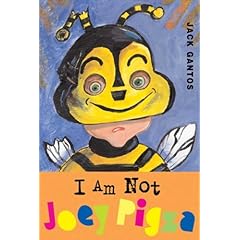
- I Am Not Joey Pigza by Jack Gantos. I simply couldn't be more excited.
- Igraine the Brave by Cornelia Funke. Looks like The Princess Knight gone novel-length.
- Garden of Eve by K.L. Going. A dead mom, but I like the author a lot and this one sounds really good.
- Thirteen Reasons Why by Jay Asher - Yay, hometown hero!
- Revolution Is Not a Dinner Party by Ying Chang Compestine
- Who Discovered America? by Russell Freedman
The Bantam Delacorte Dell Young Reader group came up just about the time I realized that my gift bag contained chocolate. Some smart pookie had wrapped milk chocolate bars in advertisements for Libba Bray's upcoming
The Sweet Far Thing. When I looked back up it was just a sea of plunging necklines. The Bantam ladies have it going on, it seems.
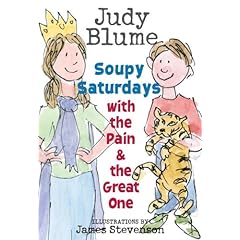
Delightfully enough, Judy Blume as a new early chapter book out. A sequel to
The Pain and the Great One, we now have
Soupy Saturdays with the Pain and the Great One. This book has been paired with James Stevenson for the illustrations which is both a simple idea and a great one. And the gift bag, to my delight, actually had a copy of this in it. Score!
Lucy Rose: Working Myself to Pieces and Bits by Katy Kelly is also coming out soon. So why the heck isn't Adam Rex doing the illustrations? He did the first two Lucy Rose books and then, suddenly and without warning, they've hired Peter Ferguson. I got nothing against Mr. F, but it seems a very odd switcheroo.
Bantam next had a hard time convincing the dyed-in-the-wool New Yorkers that a book about rats was viable kiddie fare. For my part,
Vasco, Leader of the Tribe by Anne-Laure Bondoux looked good if a bit familiar. Vasco = Rasco anyone? I was also a little surprised at the speed with which
Kiss My Book by Jamie Michaels has come out. The premise is basically the
Kaavya Viswanathan Story from her point of view. Actually, it makes for a fabulous YA novel. I can't blame Michaels for going there. I'm just a little awed at how quickly it's coming out, that's all.
And I'm actually kind of tentatively excited, against my will no less, by
Grimpow: The Invisible Road by Rafael Abalos. The Templar Knights have never really appeared in a big-time fantasy novel. Surprising, when you think about it. I liked the idea of tying them into the Philosopher's Stone and I had high hopes for this book. Then the editor introducing it invoked the name of
Eragon not once but TWICE. The kicker? When she said it was, "Part
DaVinci Code and part
Eragon". These sweet editors need to start adjusting their descriptions of these books for their librarian audiences. That kind of talk probably gets corporate bookstores and fellow publishers all hot and bothered, but you could actually see the audience cringe as they heard the dreaded "E" word invoked repeatedly.
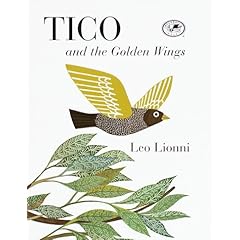
Now I'm not usually lured by teen novels but when an editor described
Before I Die by Jenny Downham as, "one of the most accurate views of what it feels like to fall in love as a teen," I was hooked. It's a dead heroine book (terminal disease, no less) but I couldn't quite tear myself away from that description. Next, without ever invoking the name of
Rainbow Fish (branch #2 on the
Triumvirate of Mediocrity), Leo Lionni's,
Tico and the Golden Wings sounds at the outset like Pfister's original inspiration. Bird gets golden wings. Bird give away golden feathers. The difference is that when Tico gives away his feathers (ala Oscar Wilde's
The Happy Prince more than anything else) the ending makes it very clear that though he now looks the same as everyone else, his experiences have made him different on the inside. Reprints of this book have made Tico's wings look a dull yellow. Random House, then, is going to use golden foil to make the books as shiny and enticing as it was when it was first published. And since the word of the day in the marketing departments is "Shiny Shiny!" this manages to be both a good publicity stunt and entirely faithful to the original publication of this classic work. Janet Schulman's a smartie.
A Song in Bethlehem by Marni McGee is another nativity story, albeit a whitey white white one. The next
Max & Pinky book is coming out (
The Adventures of Max & Pinky: Superheroes by Maxwell Eaton) and I am horribly excited about it. I love those books! I was happy to see a mention of Sue Stauffacher's
Nothing But Trouble: The Story of Althea Gibson. Unfortunately, since I've already reviewed the book, I could tell that they somehow failed to put the coolest paintings from its pages (illustrated by Greg Couch) in the Powerpoint slideshow. Tsk tsk tsk.

The upcoming reprint of Ray Bradbury's
The Halloween Tree was just a delight to me. Look at that cover. They don't hardly make 'em like that no more. Some mention was made of the fact that Ray Bradbury was once friends with Chuck Jones and that they made a movie together. If anyone has any additional information on this, I'd like to hear it.
Edward Bloor has a new novel coming out called
Taken. It does the idea of a "near future" right by placing its events squarely in 2035. That's the way you do it. None of this silly 2011 crap. The future should be within our lifetime but far enough away that when child readers reach it they are no longer children.
Finally, to round out the presentations, author Jerry Spinelli came up to the podium to speak. He called everyone "Bookies" and spoke about his
Love, Stargirl, which is due on shelves this coming August. Spinelli, it soon became clear, is a natural born public speaker. He seems so laid back, but give him a question with a little bite to it and watch him tuck in. It was odd seeing him so soon after reviewing his other book out this year with Little Brown,
Eggs. Still, he's was a good "get". Everyone, I think it is fair to say, had a remarkable time. So! Awards!
Some Good Covers: My Swordhand is Singing by Marcus Sedgwick - The byline read like a zombie novel but the title is just another vampire book. Why are there not any great YA zombie books? I'd show you the American cover but they haven't posted it online yet. Bother.
No Castles Here by A.C.E. Bauer. Actually, this is unfair. You really have to see the full cover, front and back, to appreciate it.
 Memoirs of a Teenage Amnesiac
Memoirs of a Teenage Amnesiac - Listening Library introduced this one.
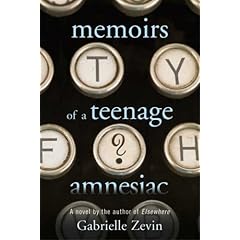 Worst Covers: A Bridge to the Stars
Worst Covers: A Bridge to the Stars by Henning Mankell. One of the editors loved it too. The problem is that it's sporting an adult font for the author and title and if it's "A magical mystery that leaves readers spellbound," then why not make it look less dreamy and more exciting? The American cover is not yet available for viewing online. Hopefully there is time to change their minds about it.
Most Familiar Cover: Wow. This here is a Lisa Yee lookalike. I didn't even know they made Lisa Yee lookalikes. Let's play a fun game now. Which one of these covers
isn't a book by Lisa Yee. Look carefully now...
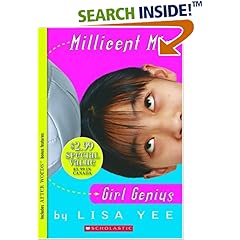
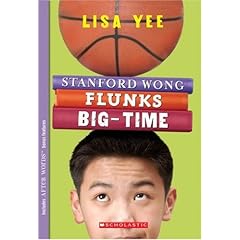
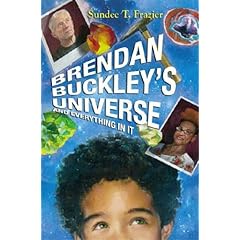

Did you find it?
Best Celebrity Lookalike On a Cover: With One Trick Pony by Daniella Brodsky (it's, oddly enough,
Chocolat for teens via coffee) we have an Anne Hathaway impersonator.
They were selling this book by telling us that 75% of teens report daily coffee consumption. Really? Really really?
 Best Phrase:
Best Phrase: Of illustrator Greg Newbold it was said that the artist, "Gives good Santa".
Worst Phrase: Ironically it was for the same book (
The Barnyard Night Before Christmas) which some ill-advised editor mentioned had equal doses of, "hilarity and heart". *shudder*
Most Enjoyable Powerpoint By-line: I can't help it. I loved the one for Louise Plummer's
Finding Daddy: "Mira opens a Pandora's box from the past and unleashes a horror of a daddy." So wrong it's right? Or just wrong?
Best Use of the Term [Blank] Meets [Blank]: I was a little disappointed this season. Last time I went to a RH preview they were pulling out the "meets" like it was nobody's business. They closest they got this time was a half-hearted
"The Devil Wears Prada meets
Ugly Betty". Which is to say...
Ugly Betty. It was meant to describe
Susanna Sees Stars by Mary Hogan. FYI.
Best Description of a Book: I'm not biased. Karen Breen herself said he was a remarkable speaker. Yes, Jack Linkey (or whatever his name is) described
When Randolph Turned Rotten by Charise Mericle Harper so well that if they'd been selling copies before us I think every person there would have bought themselves a few. It looks great, sounds great, reads great, and is great. I. Want. This. Book.




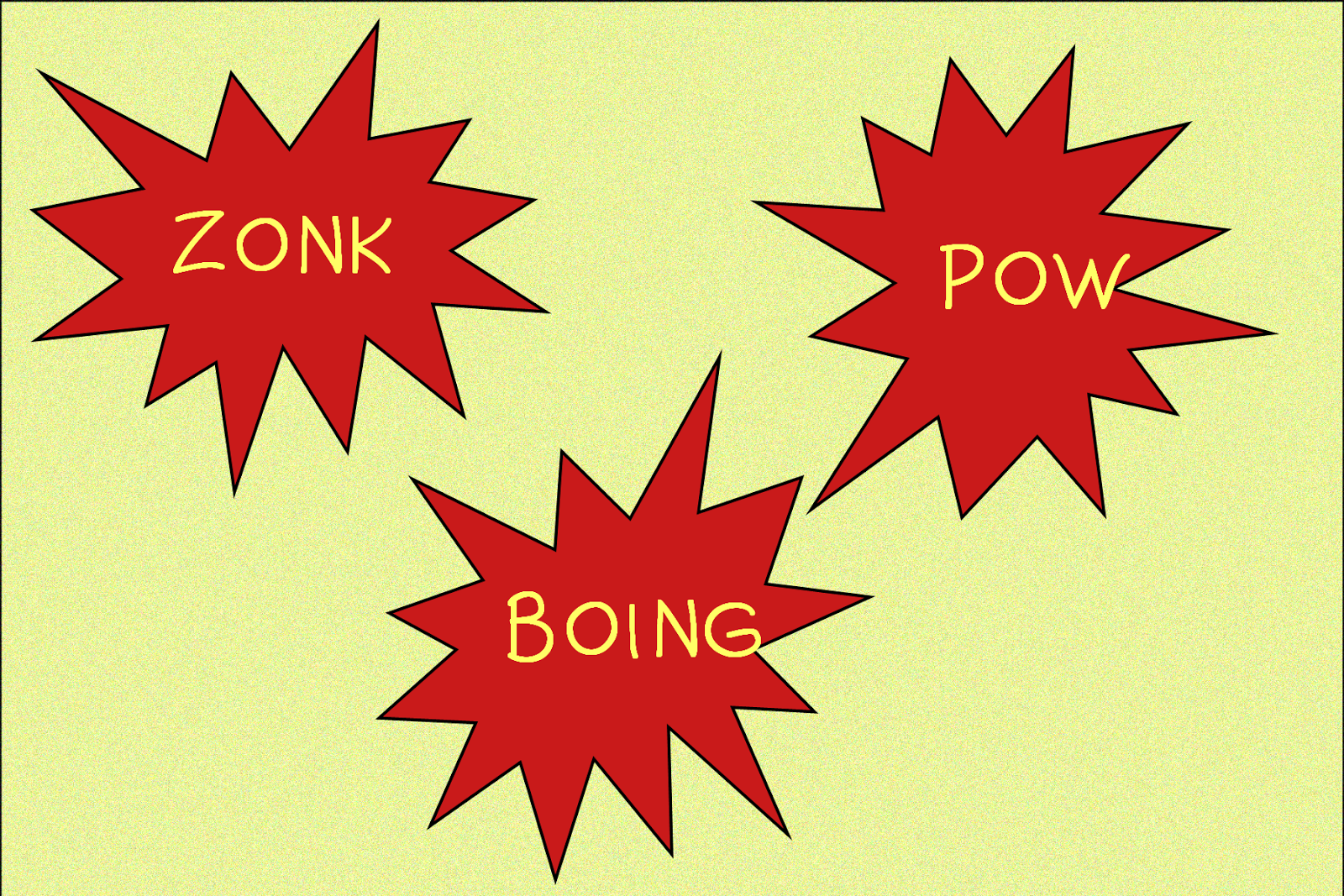
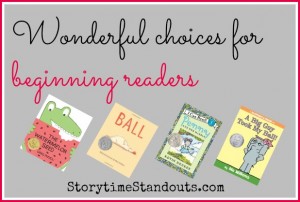

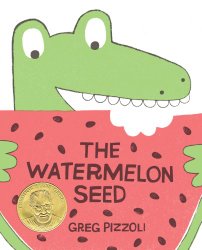

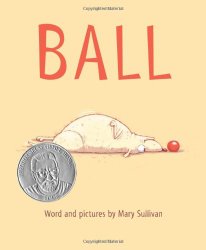
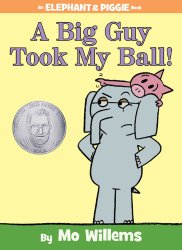
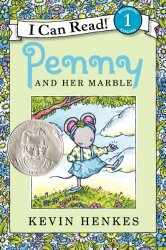
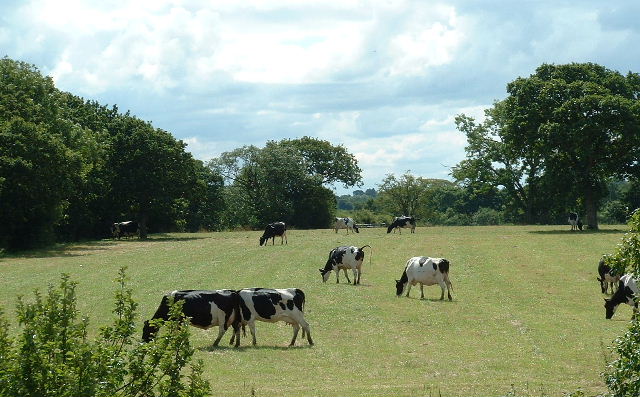
 Anatoly Liberman is the author of
Anatoly Liberman is the author of 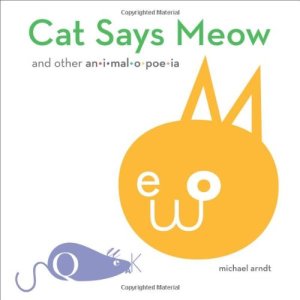
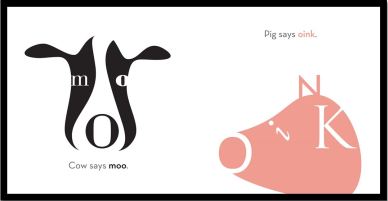
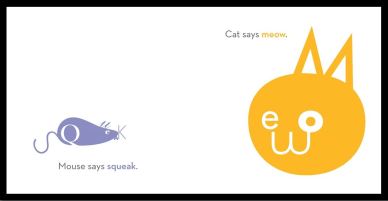





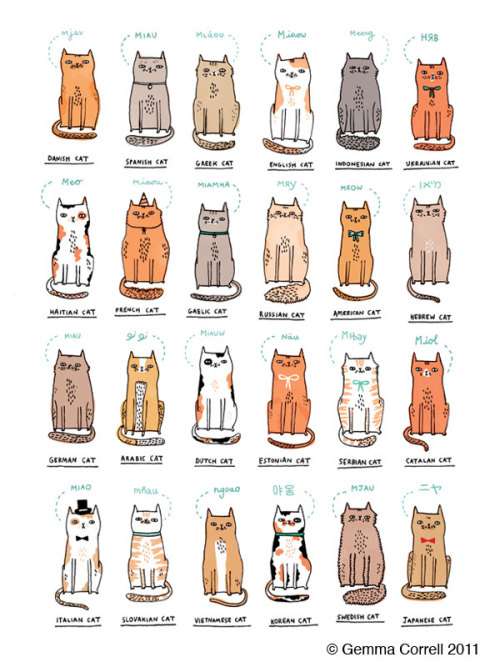














I loved this post Renee. I use a lot of these prompts and techniques when reading with the preppies on a weekly basis. I agree how a pb and it's style can stick with you forever. There are phrases I use regulary to this day with my child when prompted by a circumstance which reminds me of the story; eg the weather. Great stuff.
I've also noticed that even year 3 and 4's, especially the boys, like lots of onomatopoeias in their action scenes. It helps with the role play when they act them out
Thanks Dimity. After a few initial blogging issues, I've finally got this posted.
I was watching a children's T.V show the other morning how the hosts were reading the stories aloud and asking questions to the viewers at home. Even though I know picture books are interactive, it made me think about how I can use interactive elements whilst writing picture books.
Many of the popular picture books today have a definite rhythm and read aloud almost like a song is sung.
Hi Sandy,
I agree! Especially dinosaurs, automobiles, tigers, superheroes, and the list goes on.
It's wonderful that onomatopoeia in picture books encourages word play, language expression, and a general love of reading and learning.
Thanks Sandy. I appreciate your comment :)
Congrats Renee,
fabulous ideas and techniques to springboard discussions.
This Blog would be very helpful to parents and teachers alike :)
Thanks so much Karen. I'm really enjoying investigating more about picture books and sharing with writers, teachers, and parents.